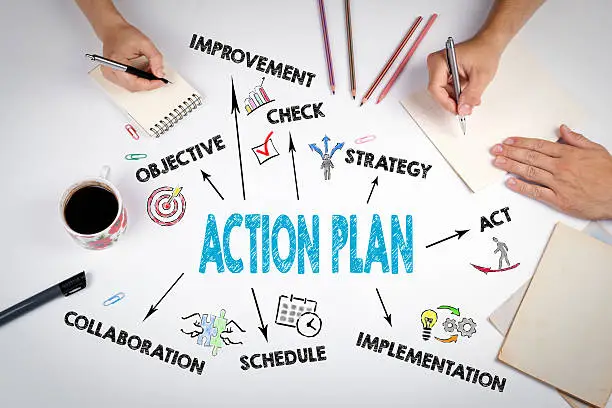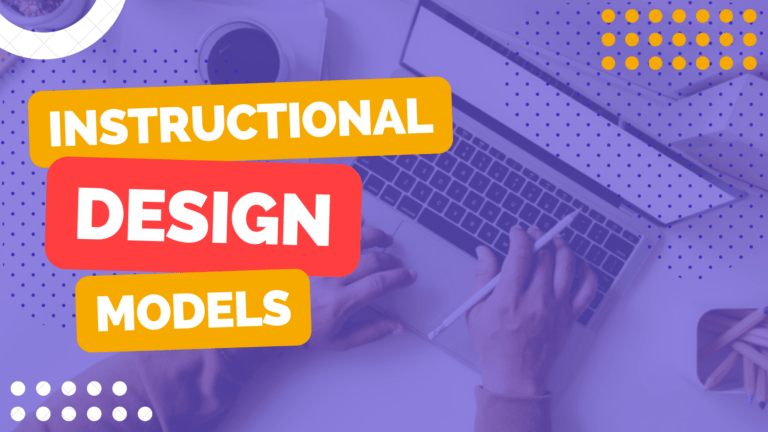5 Popular Instructional Design Principles to Enhance Your Learning Initiatives

The way these resources are presented has a significant impact on how effective the learning and training will be.
A variety of instructional design models are available to help you produce the most relevant and efficient education for your teams.
Well-developed instructional technologies and strategies within the corporate world aid employers in delivering the best training material to their teams and resulting in positive and rapid learning outcomes.
A solid instructional design strategy keeps students interested, motivated, and informed.
To assist you in coming up with the finest instructional design strategy, let’s look at some best practice instructional design principles.

Lady brainstorming
Instructional Design Principle #1: Instructional Design Should Proceed At An Efficient Pace
Since mastery of a skill requires a great deal of practice, an instructional program should quickly convey material while enticing students to practice whenever they have the chance.
This applies to both on-site and eLearning programs.
Effective instructional design revolves around getting students to a point where they can start applying their knowledge.
The writers of the book emphasize that efficiency is the best means of achieving this objective.
When creating materials, take the students’ backgrounds into account.
To create resources that will challenge pupils without overwhelming them, consider their backgrounds.
They will be able to learn at the quickest rate feasible thanks to this.
Include Supplementary Material
Students with backgrounds or skills that enable them to learn more quickly than the rest of the class should be given access to supplemental materials.
This is particularly true for university eLearning, where additional information in a subject that they are interested in can motivate students to do even more courses in that subject—or even to think about graduate-level study or a job in that field.
Add Remedial Material For Struggling Students
Include some extra material that can assist difficult students catch up as you create your course.
Lessons that use several senses and step-by-step explanations in a simpler style can aid in bringing these slower learners up to speed.
Use A Clear, Organized Format
The format in which you design the system is a key component of efficiency. Use straightforward language; avoid using jargon or difficult words.
Maintain a straightforward format so that the content is the challenge. Depending on the material, arrange the information in a logical order that makes sense.
For a history course, the order might be chronological, whereas themes might make more sense in a literature course. Keep tangential knowledge for use as enrichment.
The student may become distracted from the lesson’s primary objective by irrelevant information. Infographics and other visual and auditory aids must to be simple to grasp and easy to notice.
Provide Structure
Always connect new content to what you’ve already studied as the complexity of the material increases.
Point out how the new material relates to the old—and how it points to what’s coming in later lessons.
Use outlines and tables to organize hierarchical structures and diagrams to illustrate more complicated relationships among various components of the material.
Use Small Units To Speed Up Learning
It may be counterintuitive, but people learn better in small chunks than if you ask them to digest a lot of material at once.
You might have presented a lot of material, but that portion of the material that the students actually internalize is larger when you use smaller chunks.
Read also: Becoming an Instructional Designer: Empowering Africa’s Future
Instructional Design Principle #2: Organization is essential
When learners are presented with stacks of papers and some seemingly unconnected video clips, they get lost in the process.
Presenting the content in a way that is organized and easy to follow is essential.
A logical progression of content will your instructional designer, subject matter experts, and trainees as they go through the learning process.
Having a clear elearning development path or structure for your learning design is important and selecting online learning platforms that support this should be a priority.
Mobile-first learning management system, EdApp, includes a built-in playlists feature whereby you can easily lead your learners through the lessons in a certain order, similar to listening to your cultivated Spotify playlist or favorite record album.
Instructional Design Principles #3: Set learning objectives
No matter how enticing your introduction is, it’s tough to get excited about something if you don’t understand the point, right? You want to know what the end game is.
That’s why you need to be able to point to a clear learning objective as you’re going through the design process of your learning initiative.
What are you hoping that your learners walk away with? What are you aiming to teach them?
Maybe your objective is to familiarize them with a new piece of software that they’ll be using.
Or, perhaps you want them to know how to fill out your new expense reports.
Whatever your specific goal is, make sure that you can clearly pinpoint it—and then share it with your audience right from the start, so that you all have aligned expectations about the point of this course, training, or learning program.
Instructional Design Principle #4: provide guidance
Your course materials might be clear and well-structured, but that doesn’t mean that your audience won’t struggle with certain concepts or elements.
That’s why one of Gagné’s principles dictates that you should be a resource who’s ready and willing to provide guidance to your learners.
Welcome questions throughout your learning initiative—rather than saving them to the end.
That way you can clear up any confusion right away, as opposed to losing those audience members.
Use plenty of examples to illustrate your points. And be available following that training to answer any questions as they’re actually putting that information to use.
Instructional Design Principle #5: Provide feedback, evaluate performance and enhance retention
Provide feedback
The principle of feedback falls into the last bucket, but that doesn’t mean it should only be done at the conclusion of your learning initiative.
Frequently providing feedback as your audience moves through your course or program keeps them engaged while also giving them valuable insight into how well they’re grasping the information that’s being taught.
You can sprinkle random games throughout your course. Or, stop periodically for exercises that test your audience’s knowledge.
In response to that, make sure to explain what’s going well—and what needs a little more focus or attention.
Most importantly? Use those insights as you continue to move through your training.
If there’s a concept that most people really aren’t grasping, it might be worth revisiting again.
Evaluate performance
Similarly, assessing performance is an important step to take at the conclusion of your learning program.
This is another chance to use a quiz or assessment to not only collect their feedback but also measure their performance.
Keep in mind that this sort of assessment shouldn’t feel like a trick or surprise—it should only cover what was just discussed in your course.
Enhance retention
You don’t just want people to commit that information to memory so that they can spit it back to you in an assessment and then carry on with their daily lives.
Your goal is to equip them with information they can use for the foreseeable future, which means you want to make sure they retain what was just taught (or at least some of it).
Confirming their understanding will go a long way in making this happen.
But, you should also follow up with some supporting resources and other outlets they can use to continue the learning process—whether it’s an instant messaging channel where they can share other relevant tips and tricks they pick up or a regular workshop where you can keep those skills fresh.








Amazing contents
Thank you very much